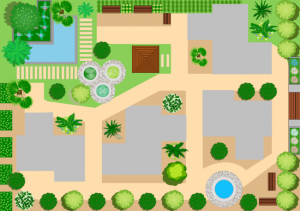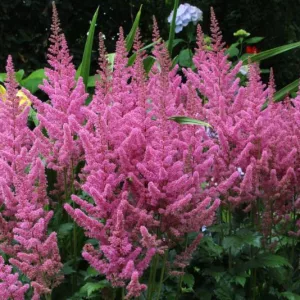I find January the perfect time for garden planning. I may not be able to walk out with a tape measure, but I have the notes I made last season to guide me. I know which areas I plan to target in the spring.
A garden is never totally static: plants grow, change or perish; trees cast more shade as they mature; family dynamics change and life simply evolves.
Be sure to consider your entire outdoor space, how you and your family use the area and your eventual goals. Break down the space into logic ‘outdoor rooms’ based on how you use each part of your yard.
The public face, the front entrance of your property, can be equated to the front hall or living room of your house. It should be appealing to all who view it, be very welcoming yet have good traffic flow so visitors can easily move from the parking area to your door.
A dry, even walking surface will allow you and your guests to reach that door. A well-built porch, stoop or deck allows for safe entrance and exit. You can position outdoor furniture if you like to visit with guests there. Show a bit of your personality and compliment you house design to make this public space inviting.
Your backyard, the private area, is like your family room or dining room. It should be comfortable, roomy enough for the type of outdoor living you enjoy and decorated to match your lifestyle. Just be sure not to make the area too cluttered. A busy space isn’t as relaxing as a simple one.
The balance of your yard can be equated to your family room. Lay it out with wide open areas for lots of play if that suits your family dynamics. Then border it with gardens for privacy and beauty!
Gardening is such a tactile and visual experience that should involve all of your five senses. Be sure to focus on colour, form and texture when choose plants and garden accessories so that your garden is both a relaxing and stimulating environment.
Consider colour first. Bold, hot colours such as red, orange and yellow draw the eye immediately and pull you into the garden. These colours add drama, make an impact both up close and far away and add energy to a space. Use them in areas where you want to draw attention.
Cool colours such as green, blue and violet as well as pastel shades, tend to recede in the garden. They add a calming influence. Use them to create a relaxing atmosphere.
When planting flowers within these colour ranges, you should place them where they can be viewed closely or plant in mass if viewed from a distance.
Texture can refer to a plant’s flowers, leaves or form. Soft or fuzzy textures invite us closer into the garden to touch. Prickly, spiny, or course textured plants say, “Stay away!” Use these plants as a barrier or further back in the garden.
Plants with fragrant flowers or leaves are a bonus in the garden. Use them in areas that you visit often or plant them farther back to draw people to a distant part of the yard. Brushing your hand over fragrant leaves can be very soothing!
The sound of nature belongs in every garden: wind rustling through tree leaves or ornamental grass plumes; birds singing; water splashing; frogs croaking or bees buzzing. Be sure to include plants that will draw wildlife to the garden with flowers, fruit or shelter. Add a water feature to add that soothing sound.
Finally, appeal to the sense of taste. There is nothing more rewarding than enjoying fresh fruit, vegetables or herbs you’ve grown yourself! If you don’t have much space, many edible plants can be grown in containers.




